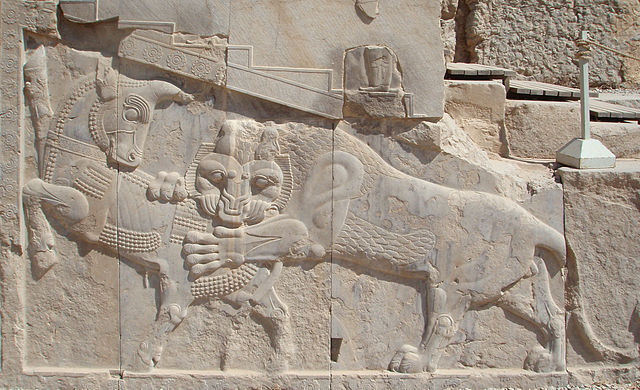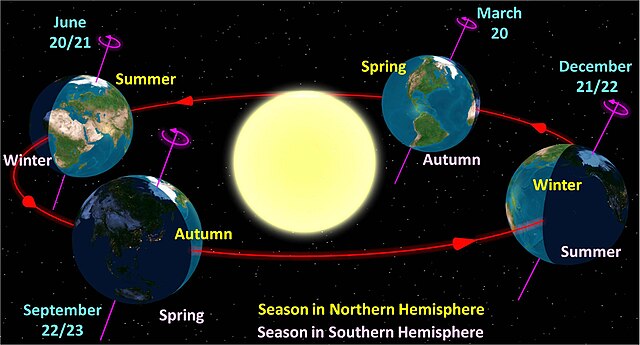The March equinox or northward equinox is the equinox on the Earth when the subsolar point appears to leave the Southern Hemisphere and cross the celestial equator, heading northward as seen from Earth. The March equinox is known as the vernal equinox in the Northern Hemisphere and as the autumnal equinox in the Southern Hemisphere.
Bas-relief in Persepolis, a symbol of Iranian Nowruz: a bull (symbolizing the Earth) and lion (the Sun) in eternal combat are equal in power on the equinox.
Chichen Itza during the spring equinox—Kukulkan, the famous descent of the snake
Equinox at the site of Pizzo Vento, Fondachelli Fantina, Sicily
A solar equinox is a moment in time when the Sun crosses the Earth's equator, which is to say, appears directly above the equator, rather than north or south of the equator. On the day of the equinox, the Sun appears to rise "due east" and set "due west". This occurs twice each year, around 20 March and 23 September.
The relation between the Earth, Sun, and stars at the March equinox. From Earth's perspective, the Sun appears to move along the ecliptic (red), which is tilted compared to the celestial equator (white).
Diagram of the Earth's seasons as seen from the north. Far right: December solstice.
Diagram of the Earth's seasons as seen from the south. Far left: June solstice.
Earth at the September 2022 equinox







